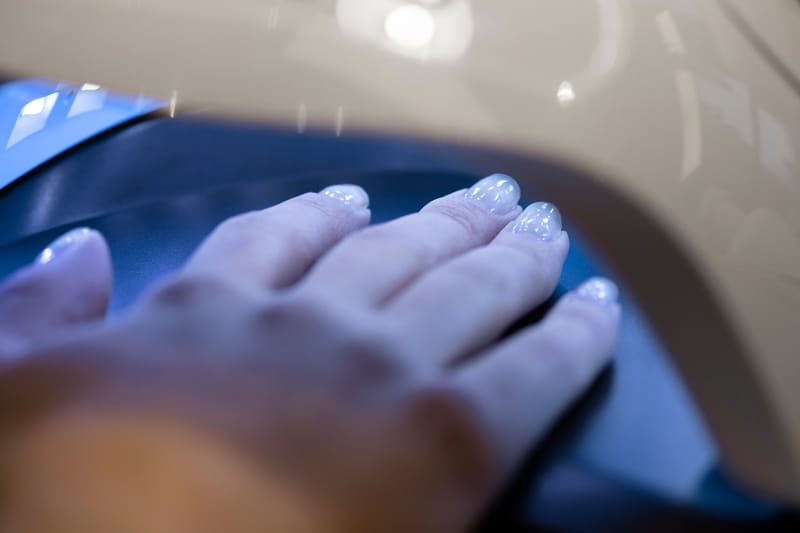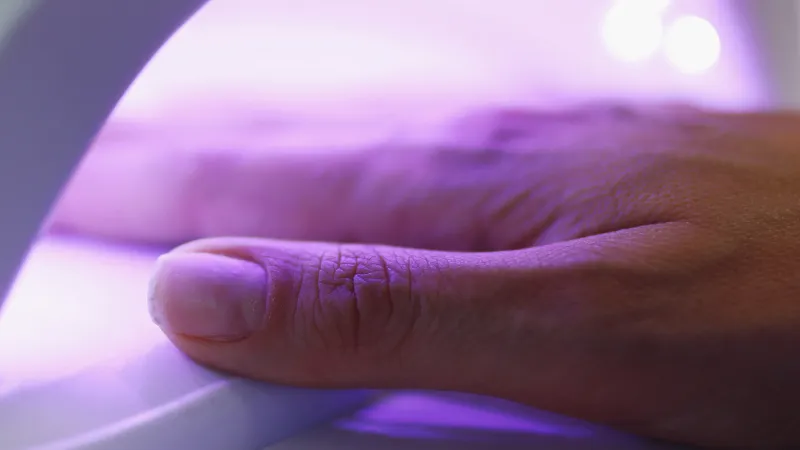Is LED or UV Nail Lamp Better? A Comprehensive Guide
Key Takeaways:
Understand the key differences between LED and UV nail lamps, including their technology, curing times, and safety aspects.
Discover the pros and cons of each type of nail lamp to make an informed decision based on your specific manicure needs.
Learn about the long-term effects and efficiency of LED and UV nail lamps to choose the best option for your nail care routine.
The Basics of Nail Lamps
Nail art has evolved into a sophisticated fashion statement in the ever-growing nail and beauty industry, and with the advent of gel polishes, the demand for quality nail lamps has surged. Two contenders dominate the scene: LED and UV nail lamps. Both have their loyalists and sceptics, and choosing between them can be as intricate as the nail art they help create. This article will delve into the nuances of each type of lamp, helping you decide which is the better choice for your manicure adventures.
When it comes to achieving that perfect, long-lasting manicure, the type of nail lamp you use can make all the difference. Nail lamps are essential for curing gel polishes and ensuring they set properly on your nails. There are two main types of nail lamps: LED (Light Emitting Diode) and UV (Ultraviolet). While both serve the same purpose, they operate differently. LED lamps use narrow spectrum light, which is typically safer and cures polish faster. On the other hand, UV lamps use a broader spectrum of light and take a bit longer to cure polish.
The Technology Behind LED and UV Nail Lamps
When it comes to curing gel polish, the technology behind the lamp is crucial. LED nail lamps utilize light-emitting diodes, a type of semiconductor, to produce light. This light is in a narrow spectrum, typically around the 400-410 nanometer range, which is optimal for curing certain types of gel polish quickly. LED lamps are known for their efficiency, often curing nails in 30 seconds to a minute.
On the other hand, UV nail lamps use ultraviolet light to cure gel polish. This light comes from fluorescent bulbs that emit a broader spectrum of UV light. UV lamps generally take longer to cure gel polish, with curing times ranging from 1 to 3 minutes. However, they are compatible with all types of UV gel polishes, making them a versatile choice for nail technicians and home users alike.
LED Nail Lamps: Speed and Efficiency
LED nail lamps are known for their quick curing times, often setting gel polish in 30 seconds to a minute. This is a significant advantage for both salon professionals and at-home users looking to save time. Additionally, LED bulbs last much longer than UV bulbs, with a lifespan of around 50,000 hours. This means less frequent bulb changes and a more consistent curing process over time. The energy efficiency of LED lamps is not only beneficial for time-saving but also for energy consumption, making them an eco-friendlier option.
UV Nail Lamps: Versatility and Accessibility
UV nail lamps have been around longer than LED lamps and are compatible with all types of gel polishes. This universality makes them a versatile choice for salons that use a wide range of gel products. Moreover, UV lamps are often more affordable than LED lamps, making them accessible to those on a budget. Despite their longer curing times, typically around 2 minutes per coat, UV lamps are still a popular choice in the nail industry.
Curing Times and Nail Product Compatibility
Curing time is a significant factor when considering which nail lamp to use. LED lamps are celebrated for their speed, which is a boon for both professionals looking to serve more clients and individuals eager to reduce their manicure time. The quick curing time also reduces the risk of smudging, ensuring a flawless finish.
However, the speed of LED lamps comes with a caveat: they are not universally compatible with all gel polishes. Before investing in an LED lamp, it's essential to check if your preferred gel polish brand and type are formulated to be cured with LED light. UV lamps, while slower, do not have this limitation and can cure any UV gel polish, making them a more flexible option for those who use a wide variety of nail products.
Safety Considerations: LED vs. UV Nail Lamps
Safety is a paramount concern when using any nail lamp. UV lamps have been scrutinized for their potential to cause skin damage due to prolonged UV exposure. While the risk is relatively low, especially with proper use and protective measures like sunscreen or UV-protective gloves, it is still a consideration for many users.
LED lamps, emitting a narrower spectrum of light, are often touted as the safer alternative. They produce less UV radiation and require shorter exposure times, which can reduce the overall risk of skin damage. However, it's important to note that LED lamps are not entirely free from UV light, and precautions should still be taken to protect the skin and reduce the remote risk of skin cancer.
Long-Term Costs and Efficiency
When evaluating the long-term implications of using LED or UV nail lamps, both the initial investment and ongoing costs must be considered including the cost of bulb replacements. LED lamps tend to be more expensive upfront but are more energy-efficient and have a longer lifespan, with bulbs that can last for thousands of hours without needing replacement.
UV lamps are generally less expensive initially, but the bulbs have a shorter lifespan and will need to be replaced more frequently, adding to the long-term cost. Additionally, they consume more energy, which can contribute to higher electricity bills over time. The efficiency and cost-effectiveness of LED lamps often make them the preferred choice for those looking to minimize their long-term expenses.
When considering cost, think about your long-term use and the potential savings from reduced maintenance and energy bills.
The Gel Polish Factor
Not all gel polishes are created equal, and the type of polish you use can influence your choice of nail lamp. Some gel polishes are formulated specifically for LED lamps and will not cure properly under UV light. Conversely, most UV polishes will cure under LED light, but the curing times may vary. It's essential to check the polish manufacturer's recommendations to ensure compatibility with your nail lamp and achieve the best results.
Long-Term Effects on Nails
Frequent use of nail lamps, whether LED or UV, can potentially lead to nail damage over time. The heat and radiation from the lamps can cause nails to weaken or become brittle. To minimize these effects, it's recommended to take breaks between gel manicures and to nourish the nails with cuticle oil and nail strengtheners. Additionally, using lower wattage lamps and reducing curing times can help preserve nail health.
Environmental Impact
The environmental impact of nail lamps is another aspect to consider. LED lamps are more energy-efficient and have a longer lifespan, which means less waste and lower energy usage. UV lamps, with their need for bulb replacements and higher energy consumption, have a greater environmental footprint. For those looking to make eco-friendly choices, LED lamps are the clear winner.
The Final Verdict
Choosing between an LED or UV nail lamp ultimately comes down to personal preference, budget, and specific needs. LED lamps offer speed, efficiency, and safety, while UV lamps provide versatility and affordability. Consider the type of gel polish you use, the cost implications, and the long-term effects on your nails when making your decision.
Summary
In the debate between LED and UV nail lamps, both have their merits. LED lamps are fast, efficient, and have a longer lifespan, making them a great choice for those who value time and are concerned about safety and environmental impact. UV lamps, on the other hand, are versatile, accessible, and compatible with all gel polishes. Safety concerns can be mitigated with proper precautions, eg wearing fingerless gloves, and while they may be less cost-effective in the long run, they remain a popular choice for many. Ultimately, the decision should be based on your individual needs, preferences, and the type of gel polish you use. By considering these factors, you can make an informed decision that best suits your manicure needs.
FAQ Section
Q: Can I use any gel polish with an LED nail lamp? A: Not all gel polishes are compatible with LED nail lamps. It's important to check the manufacturer's instructions to ensure that the polish is formulated for LED curing.
Q: Are UV nail lamps unsafe to use? A: UV nail lamps emit UV radiation, which can pose a risk of skin damage with prolonged exposure. However, the risk is relatively low, and using protective measures like sunscreen or UV-protective gloves can mitigate it.
Q: Are LED nail lamps safer than UV lamps? A: LED lamps emit less UV radiation and cure polish faster, reducing exposure time. While both types of lamps are considered safe for occasional use, LED lamps are generally seen as the safer option, especially with proper hand protection.
For more information about Nail Lamps please click the link below!





